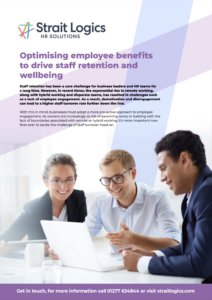
You may have heard of The Great Resignation, an ominous term describing the current labour market, but what actually is it, and what does it mean for modern businesses today?
In this post, we’ll explore The Great Resignation, what it is, and how organisations can best manage the changing needs of their workforce.
What is the Great Resignation?
The COVID-19 pandemic has changed the playbook for the global labour force. Enabling home working on a massive scale, workers no longer felt tied to the office, and businesses quickly discovered the benefits of a more virtual workplace.
But with a taste for the flexibility and balance that home working afforded them, many employees were resentful of being called back to a life of daily commutes, and less time with loved ones.
As a result of mandated back-to-the-office calls, workers began voting with their feet. In the US alone, a record 4.5 million workers quit their jobs last November as American businesses beckoned employees back to a physical workspace.
In the UK, we saw younger workers taking an exodus, with a third of millennials saying they would quit rather than be forced back to the office full time. In fact, two-thirds of British workers, in general, said they would rather continue working from home than go back to the office.
It seems that during the pandemic, many had the time and space to reassess their passions and priorities, leading to a great reshuffle, with many now seeking more flexible roles, passion projects or going self-employed to pursue better freedom and flexibility.
What triggered the Great Resignation?
Naturally, now that employees have been able to reinvent work, find a balance between work and life, build a routine that suits them and their personal commitments and scrap the stressful daily commute, many began rebelling against a mandated office return.
With this in addition to the viral #quitmyjob phenomenon reaching 200 million viewers on TikTok, what began as a ripple effect has led to a tidal wave of resignations across the UK.
How can organisations adapt?
Businesses looking to build a better staff retention strategy must take into account the current climate and the volatility of today’s labour market.
That means, above all, HR leaders must listen to employees, establish their irks, their desires and how they want to navigate forward in the wake of the global pandemic.
Offer flexible working
As workers increasingly get itchy feet, their key needs and desires are centred around time and work/life balance. Whether it’s an afternoon a week to work on a passion project, an employer to invest in their further education and development, or simply a workplace that enables flexitime, flexibility is one of the most important factors in a post-pandemic workplace.
Implement a workplace rewards scheme
Not only is now the time to start going above and beyond for your staff, but it’s also time to think about better personalisation in helping your team members feel valued and engaged. The modern workplace is full of diversity, so having a rewards scheme in place with a variety of perks can help you to appeal to the different interests and preferences of your workers. Embracing and celebrating employee individuality is essential when almost one-third of employees cite their benefits package as a reason to resign.
Show employees their worth
Alongside this now is the time for businesses to find ways to remind their workers of their value, and how they fit in in terms of the bigger picture of the company. Whether you want to offer share schemes to incentivise staff longevity, or a generous pension scheme to encourage loyalty, it’s worth investing in an easily accessible hub for employees to log in and see their worth (in addition to their monetary value).
Communicate little and often
As employees graft and hustle from home, dealing with 24/7 connectivity and often working , it’s important to build an internal communications plan that breaks through all the noise and reminds employees that they are needed, and valued. Amidst the chaos of the daily grind, it’s easy for your employees to let workplace perks pass them by. With short, regular communications about your benefits and employee packages, you’ll keep employees’ worth front of mind, helping staff to feel engaged and valued for longer.
With solutions such as Rewards Portal in place, you facilitate a virtual space where your valued talent can build their own collection of benefits. What’s more, they can simply log in to see a full indication of their workplace value at a glance from wherever they are, to remind themselves why they might want to stick around as your business continues to grow.

